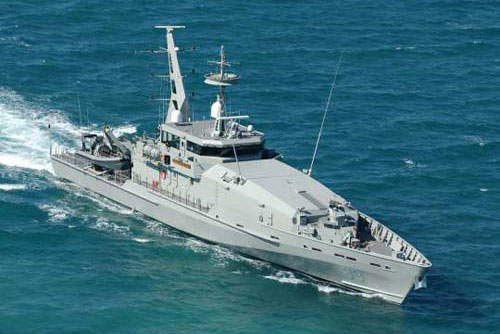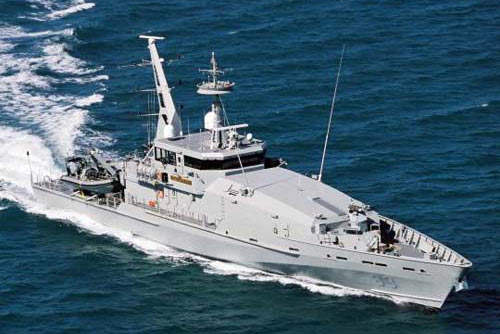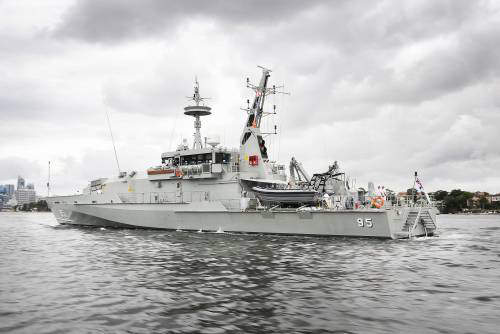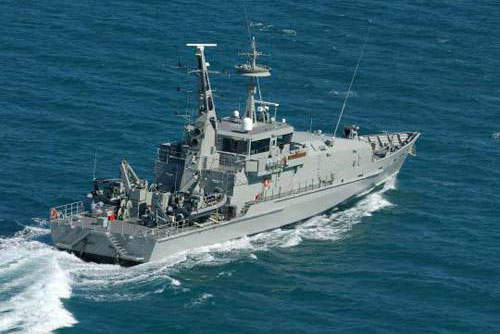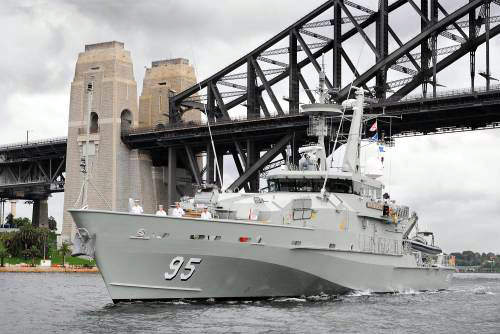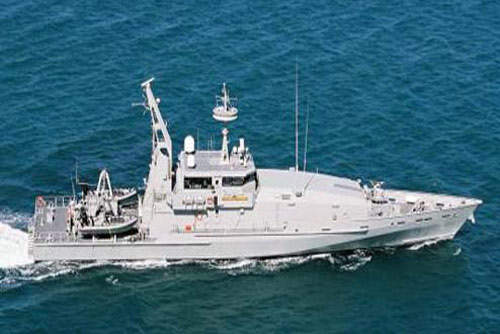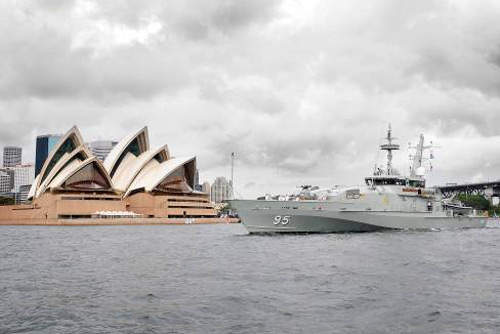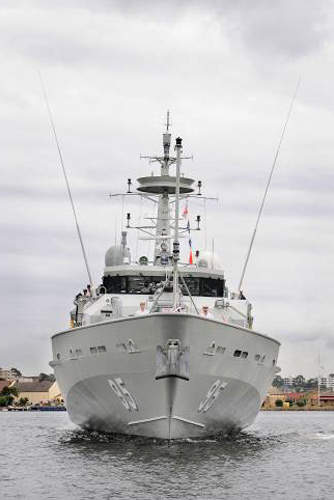Armidale Class patrol boats were commissioned and built for the Royal Australian Navy to provide naval support for civilian authorities in missions such as fisheries protection, custom patrols and in protection against illegal immigration.
The Armidale class patrol boats were introduced to replace the 15 Freemantle Class large patrol vessels that entered service between 1980 and 1984 and approaching the end of their operational life.
In December 2003, the Australian Ministry of Defence awarded the prime contract to Defence Maritime Services (DMS) for the supply and support of 12 Armidale Class patrol boats. The Australian Government subsequently ordered two additional Armidale vessels in June 2006.
DMS subcontracted the design and construction of the patrol boats to Austal and they were built at Austal’s Henderson shipyard near Freemantle. The $553m contract covers the design, build and supply of the patrol boats and support and maintenance for 15 years. DMS, formed in 1997 by P&O Maritime and Serco Australia, guarantees the availability of the patrol boats at 3,000 patrol days a year.
Armidale Class patrol boats
The construction of the first of class HMAS Armidale (83) began in May 2004. Armidale was launched in January 2005 and entered service in June 2005. The other ships of the class are:
- HMAS Larrakia (84), commissioned February 2006
- HMAS Bathurst (85), commissioned February 2006
- HMAS Albany (86), commissioned July 2006
- HMAS Pirie (87), commissioned July 2006
- HMAS Maitland (88), commissioned September 2006
- HMAS Ararat (89), commissioned November 2006
- HMAS Broome (90), commissioned February 2007
- HMAS Bundaberg (91), commissioned March 2007
- HMAS Wollongong (92), commissioned June 2007
- HMAS Childers (93), commissioned July 2007
- HMAS Launceston (94), commissioned September 2007
- HMAS Maryborough (95) commissioned December 2007
- HMAS Glenelg (96), commissioned in February 2008
The Armidale Class patrol boats are based at HMAS Coonawarra in Darwin, Northern Territory and HMAS Cairns in Cairns, Queensland, and are deployed on surveillance, interception and escort missions. Ten patrol boats are based at Darwin and four patrol boats at Cairns.
The boats operate in Australian waters in the northern exclusive economic zone and in latitudes up to 50°. The two additional Armidale Class patrol boats (Maryborough and Glenelg) are separately based in Australia’s north west to defend oil and gas assets.
Armidale patrol boat construction
The Armidale Class patrol boats are of conventional welded aluminium alloy construction with a semi-displacement vee hull. The design and construction meets the commercial standards of Det Norska Veritas Rules for high-speed light craft and the standards specified in the navy maritime materiel requirements.
The boats have Seastate active ride control with hydraulic stabiliser fins and stern trim tabs. The hull is 56.8m in length and the displacement is 270t.
The stern deck accommodates two Zodiac 7.2m waterjet boats.
Performance
The main roles of the Armidale Class are naval support of civilian authorities in missions such as fisheries protection, custom patrols and in protection against illegal immigration. Missions are expected to be typically of 21 days duration. At a cruise speed of 12kt, the patrol boats have a range of 3,000nm with a fuel reserve of 20%.
The boats, which operate with a crew of 21, will be multi-crewed allowing a high annual usage. There is accommodation for 20 additional crew members.
The requirement specification for the vessels included the ability to carry out surveillance and boarding missions in conditions up to sea state 4 with 2.5m wave height and surveillance missions in conditions up to sea state 5 with 4m wave height. The Armidale Class is capable of surviving cyclonic conditions. The requirement specification outlined the capability to carry out 42-day missions between resupplies with a range up to 3,000nm .
The trials have proven the boats’ sea-keeping characteristics in high sea states which exceed the performance requirements.
Armidale class weapons
The vessel is armed with a Rafael Typhoon 25mm stabilised naval gun mount with an ATK Bushmaster cannon. Fire control is provided by a Rafael Toplite multi-sensor optronic weapons director. The gun has a traverse range of ±20° and an elevation of -12.5° to +40°30′. The gun has a stabilisation accuracy of 0.2mrad.
The line of fire stabilisation allows hostile targets to be engaged with precision in high sea state conditions and at appropriate stand-off distance. The gunner can choose to operate the gun manually or automatically. The ship also carries two 12.7mm machine guns.
Sensors and communications
The Armidale Class patrol boats are equipped with low-light optical surveillance and a Bridgemaster E radar operating at E, F and I bands.
BAE Systems Australia’s passive radar identification system (PRISM III) electronic support measures provides detection, direction finding, analysis and classification of radar emissions in the 2GHz-18GHz band.
CEA Technologies has been contracted to supply the modular integrated ships communications suite (ISCS).
Propulsion
The Armidale Class boat is fitted with two MTU 16V 2,320kW diesel engines with ZF transmission systems, driving twin screws. In 2007, the fuel system design was modified with the addition of coalescers to prevent water contamination of the fuel system. There is a 160kW bow thruster.

